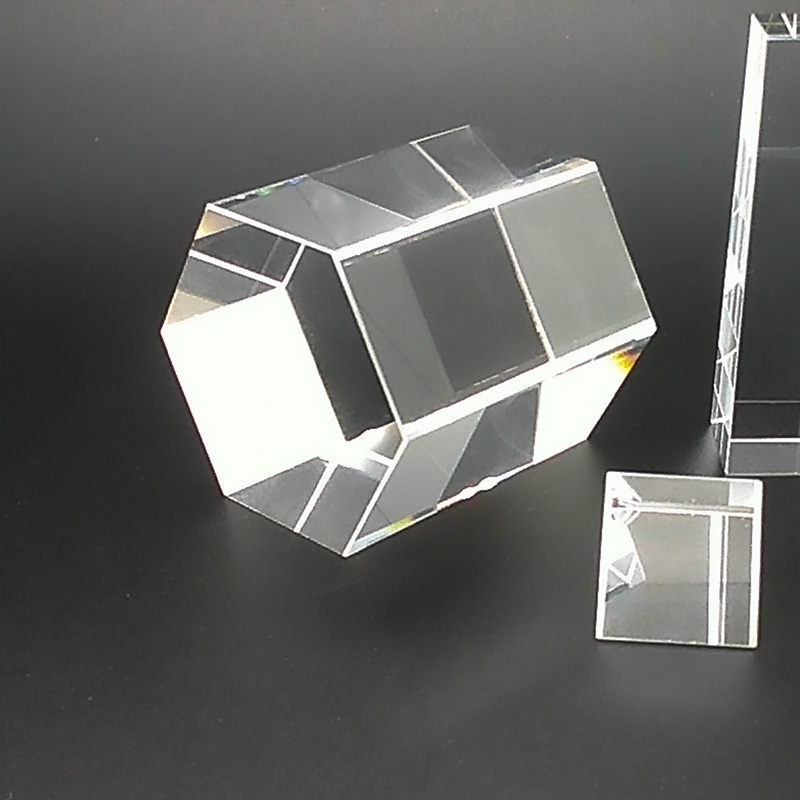Types of Optical Prisms
Optical prisms are used to manipulate light in a variety of ways, such as refracting, reflecting, and splitting. They come in a variety of shapes and sizes, and each type of prism has its unique properties that make it suitable for specific applications.
In this article, we will explore some of the most common types of optical prisms.
1. Right-angle prism
As the name suggests, a right-angle prism has a 90-degree angle between its two faces. This type of prism is used to reflect light at a 90-degree angle and is often used to flip the image produced by a camera lens so that it appears the right way up on the camera's sensor.
2. Roof prism
A roof prism is a type of reflecting prism that is used in binoculars and other optical instruments to flip the image horizontally. This prism has a particular shape that allows light to reflect off its surfaces at an angle of 90 degrees.
3. Dove prism
A Dove prism is a type of reflecting prism that has two faces that are parallel to each other but at an angle to the base. This prism rotates the image around a fixed axis without changing its orientation, making it useful in applications such as laser alignment.
4. Porro prism
A Porro prism is a type of roof prism that has an asymmetrical shape that allows the image to be flipped both horizontally and vertically. This type of prism is commonly used in binoculars and other optical instruments.
Recommended article:Measurement & Analysis Instruments
5. Amici prism
Revolutionizing Navigation: The Laser Gyroscope Unveiled
Quartz Flexible Accelerometer in Drilling: Enhancing Efficiency and Safety
Benefits of the Motor and Propeller Test Kit
What Are The Features And Specifications of The Multihead Weigher?
Three Phase Power Analyzer: Accurate Measurements for Electrical Systems
Spherical vs. Aspheric Lenses: A Clear Perspective
An Amici prism is a type of reflecting prism that has a roof-like shape and is often used in spectrometers. This prism produces an inverted image and is designed to reflect light at a 180-degree angle.
6. Equilateral prism
An equilateral prism is a type of refracting prism that has three equal faces that are at an angle to each other. This prism can split white light into its constituent colors, creating a spectrum.
7. Penta prism
A Penta prism is a type of reflecting prism that has five faces and is often used in cameras and other optical instruments. This prism produces an image that is not flipped, making it useful in applications where image orientation is critical.
8. Wedge prism
A wedge prism is a type of refracting prism that has a triangular shape, with one face thicker than the other. This prism is used to change the angle of light passing through it, and it is often used in laser applications.
In conclusion, optical glass prisms come in a variety of shapes and sizes, each with its unique properties that make it suitable for specific applications. From right-angle prisms to wedge prisms, these tools are essential in manipulating light in various ways, such as refracting, reflecting, and splitting. Whether used in binoculars, cameras, spectrometers, or laser applications, prisms play an essential role in a wide range of fields.
Additional resources:What is the difference between chromatic and achromatic lens?
Types of Optical Domes: A Comprehensive Guide
The Science Behind Engine Test Benches: Unlocking Performance and Efficiency
How do Optical Glass Domes Protect Sensitive Equipment or Components?
How does a MEMS IMU work?
Applications of Custom Optical Windows
Know the Features of the Multihead Weigher?
204
0
0
Related Articles
-
88
0
0
-
25
0
0
-
43
0
0
-
35
0
0
-
Unlocking Affordable Spectrum Analysis: Lowcost Solutions Decode Wireless Signals
Unlocking Affordable Spectrum Analysis: Low-Cost Solutions Decode Wireless Signals.
36
0
0
-
31
0
0
-
Unlocking the Secrets of Spectrum Analyzer Signal Generator
Unlocking the Secrets of Spectrum Analyzer Signal Generator.
26
0
0









Comments
All Comments (0)